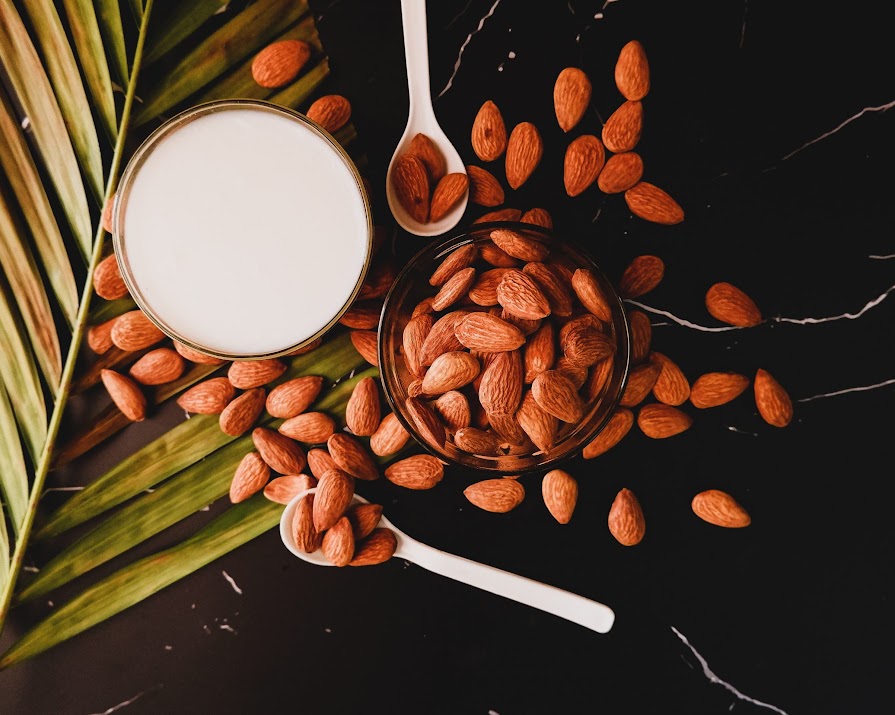
Almond lattes are not just for the Hollywood elite anymore. Health, ethical and environmental reasons mean more of us are turning our backs on traditional cows milk, writes Amanda Cassidy.
Research carried out by Mintel found that a quarter of us regularly consume non-dairy milk alternatives. But as more and more products hit the market, there are huge differences in quality when it comes to adding a splash to your morning coffee.
Highly processed, additive-laden versions of such ‘milks’ abound. Five years ago, a false advertising lawsuit was filed against the makers of a brand of almond milk called Almond Breeze by consumers upset over the fact that it only contained a shocking 2% of almonds.
But each year, more well-considered, organic, and fantastic tasting milk alternatives are hitting supermarket shelves. We spoke to Nutritionist Kim Pearson about the differences and most importantly, which one makes the best cappuccino.
I don’t recommend rice milk for those on a low carb diet
Almond Milk
“This is what you will find in my fridge,” laughs Kim who admits it is her personal go-to. “Homemade almond milk can be made simply by blending together almonds and water (a small pinch of sea salt and vanilla bean extract are optional) before gently pressing the liquid through a muslin cloth.
Almonds are a natural source of vitamin E and almond milk is low in carbohydrates making it ideal for anyone on a low carb diet. Make sure you choose unsweetened almond milk as some varieties do contain added sugar.
Watch out for some bigger brands of almond milk which contain a very low percentage of almonds and have unnecessary additives.
Rice Milk
Most commercial rice milks are made by pressing soaked brown or white rice through a mill. It is popular because rice milk is the least likely of all dairy-free milks to cause an allergy, as it doesn’t contain common allergens such as nuts or soya. “You can find rice milks that are fortified with vitamins with like B12 and calcium but whilst boosting the nutrient content, these nutrients are not naturally occurring” explains Kim.
“Even unsweetened rice milks can be quite high in naturally occurring sugars so be careful when it comes to how much you’re drinking. I don’t recommend rice milk for those on a low carb diet.”
Soya Milk
The process of soya milk production varies a lot among commercial brands. Some go through multiple steps of industrial processing whilst more traditional soya milk is made by simply soaking soya beans and blending them with water.
“Soya milk has the highest protein content of the dairy-free milks” Kim explains. “A 200ml serving of soya milk typically contains 6-7g – the same amount of protein in cow’s milk. Soya milk creates a good foam when steamed and many coffee experts believe that it’s the best option for use in cappuccinos.”
But what you might not know is that soya products can disrupt hormonal balance. “If you choose to eat soya products, I would always recommend opting for organic as soya can be exposed to high pesticide usage during its farming”.
Coconut Milk
This is produced by grating coconut flesh and then soaking it in hot water, the coconut cream then rises to the top. This is squeezed through a cloth to produce the coconut milk.
“Coconut milk is higher in fat than other milk alternatives,” says Kim. “However these fats have health benefits. Like coconut water, coconut milk also contains some electrolyte nutrients”.
Oat milk
Quality oat milks contain naturally occurring beta-glucans – a component of the oat cell wall which has been shown to help maintain healthy cholesterol levels.
And there is a reason it is one of the favourites of all the dairy-free alternatives.
“Oat milk is arguably the sweetest of the dairy-free milks” says Kim. ”Even the unsweetened ones contain the equivalent of around a teaspoon of sugar per 100ml. Therefore I would recommend consuming oat milk in moderation and avoiding it if you are following a low carb diet.”
Like all conscious shoppers, you should take the time to check the ingredients on the back of the carton of all and any of these natural milks. “The less ingredients the better” Kim explains. “And always opt for organic where possible.”
Kim Pearson qualified as a nutritionist at London’s Institute for Optimum Nutrition in 2008 and has worked in the field of nutrition and health for over 15 years.
Image via Unsplash.com.























